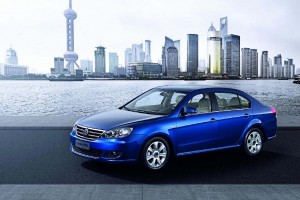The automotive arms race in China is showing no signs of abating; if anything, the market’s leaders are stocking up more ammo.
General Motors, which this year expects to sell a record 3 million vehicles in China, has announced plans to raise its capacity in the booming market by 20%. Toyota also has disclosed plans to raise their presence in China – which is now the largest passenger car and commercial truck market in the world and is on its way to becoming the top luxury market in the world as well.
Meanwhile, Volkswagen has marked the beginning of construction on a new assembly plant in Changsha in the south-central province of Hunan. The factory is being built as part of the maker’s Chinese joint venture Shanghai-Volkswagen (SVW).
“We are expanding our capacity in China to four million vehicles per year by 2018 in order to meet demand from our Chinese customers”, Jochem Heizmann, President and CEO of Volkswagen Group China, said at the groundbreaking.
VW also reportedly is closing in on a deal with its other major partner, First Automotive Works, or FAW, on launching a new brand aimed at the low end of the Chinese market. VW would be the latest foreign maker to accede to a semi-official mandate of the Chinese government that has already seen the launch of GM’s Baojun brand, and Nissan’s Venucia.
The new Volkswagen plant in Changsha is scheduled for completion at the end of 2015 and will manufacture approximately 300,000 vehicles per year. The maker promises the new facility will meet the most advanced global standards for energy usage and solid and water waste in line with its “Think Blue Factory” policy for Europe.
According to Heizmann, “We will meet our environmental responsibility in Changsha and set another milestone in resource-efficient production with the new factory.”
The Changsha plant is part of the €9.8 billion, or $12.6 billion, investment program VW has set in place. The goal is to consolidate the Group’s leading position in the Chinese passenger car market where it has been locked in a tight battle with GM. The investments focus on developing new models and expanding production capacity.
Shanghai-Volkswagen currently operates vehicle plants in Shanghai and Nanjing as well as Yizheng, in the province of Jiangsu. Additional factories are being built in Ningbo and in Urumqi in far west China under the “Go West” strategy.
FAW-Volkswagen operates vehicle plants in Changchun and Chengdu. A factory in Foshan which is currently under construction will be FAW-Volkswagen’s first plant in Southern China.
Together with its partners FAW-Volkswagen and Shanghai-Volkswagen, the Volkswagen Group currently builds 20 models of the Volkswagen, ŠKODA and Audi brands in China.


While China has the most growth potential for car makers I’m betting a lot of the car makers will be “downsizing” in China in 10 years or less.
VW will sell more cars to the taxi fleet than any other company will produce.